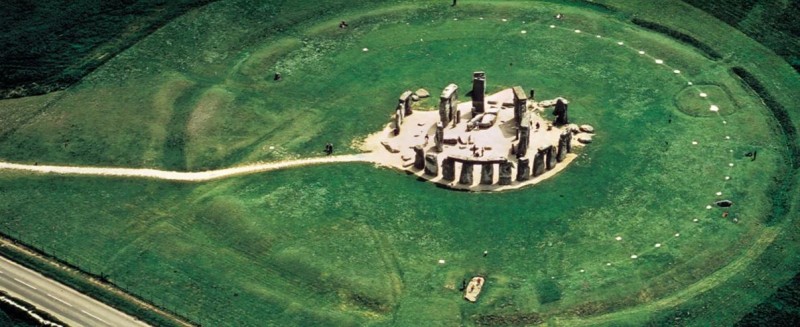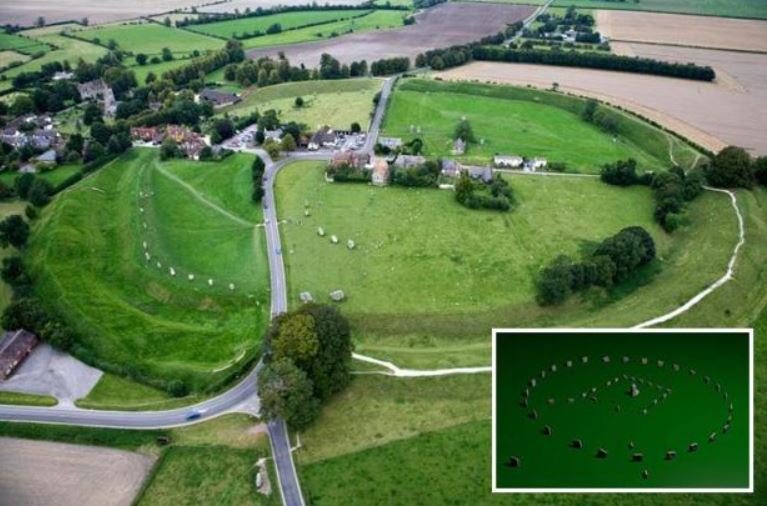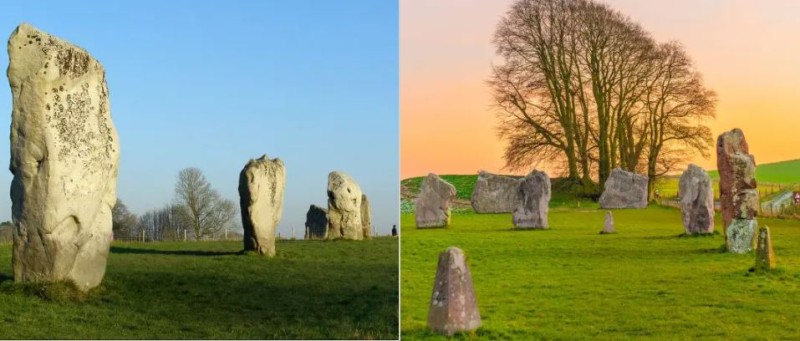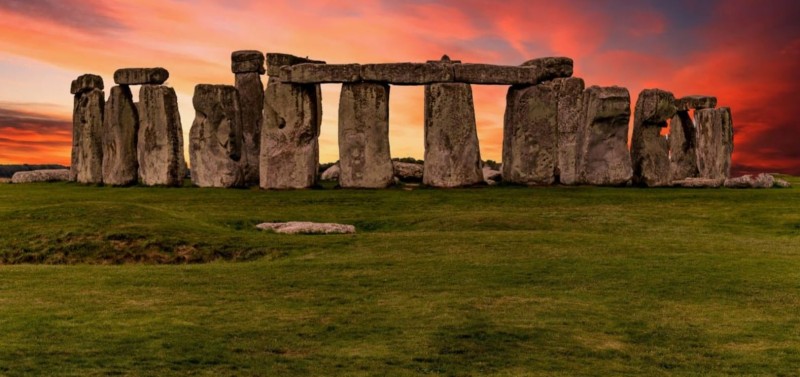How and why was Stonehenge built and what was it used for?
The mystery surrounding the history of Stonehenge still puzzles historians, archaeologists and geologists.
There are many theories about the way and purpose of its construction but, to date, there is still no overwhelming evidence to prove the truthfulness of any of them.
Purpose: One of the biggest mysteries surrounding Stonehenge is its purpose. While most scholars agree that it was a ceremonial site, the exact nature of the ceremonies and the reason for its construction remain unclear.
Construction: Another mystery is how Stonehenge was constructed, particularly given the size and weight of the stones used. Theories range from the use of ropes and wooden rollers to advanced techniques such as anti-gravity devices.
Alignment: Stonehenge is aligned with several astronomical events, including the summer solstice. The exact significance of this alignment is not fully understood, but it is believed to have had a religious or spiritual purpose.
Transport: The stones used in Stonehenge are not local to the area, and it is unclear how they were transported to the site. Some have suggested that they were moved along rivers, while others believe that they were transported by land.
Symbols: There are several enigmatic symbols and carvings associated with Stonehenge, including the “dagger” and “axe” carvings on some of the stones. The meaning of these symbols is not fully understood, but they may have had a religious or symbolic significance.
Stonehenge is one of the most famous archaeological sites in the world, and it is located in southern England.
Its construction dates back to about 5000 years ago, during the Bronze and Iron Ages. It is one of the most legendary ancient monuments, even older than the pyramids in Egypt.
Stonehenge is part of a remarkable ancient landscape of Early Neolithic, Late Neolithic and Early Bronze Age monuments.
With more than 350 burial mounds and important prehistoric monuments such as Stonehenge Avenue, Cursus, Woodhenge and Durrington Walls, this landscape is a vast source of information on the ceremonial and burial practices of Neolithic and Bronze Age peoples.
The stones that make up Stonehenge are made of sandstone, are over 60 million years old and weigh around 25 tons. To understand each other, like about 4 elephants or a quarter of a blue whale. And all this before the invention of the wheel.
![]()
The first theories on the legend of Stonehenge
Among the most supported theories about Stonehenge there are those who say that it was:
- an ancient cemetery;
- a place to study the movements of the moon and the sun;
- a place of pagan sacrifice;
- a place for deputy to heal the sick.
One of the most interesting hypotheses, for which there is at least some evidence, is that Stonehenge was a sort of ancient almanac, since the stones appear to indicate a calendar in harmony with the rotation of the Earth around the sun.
What is certain is that Stonehenge was an immensely important place for those who built it 5,000 years ago. Just look at how much effort and human sacrifice it took to bring him up.

Stonehenge born thanks to magic
Historic fable seller and King Arthur enthusiast, Geoffrey of Monmouth, in 1136, wrote his famous book, “The History of the Kings of Britain”.
In this text he claims that the proponents of Stonehenge were the druids and magic. This was the idea that everyone believed as fact until the late Tudor period in the 17th century.
Stonehenge is believed to have been constructed in several phases between 3000 BC and 2000 BC, during the Neolithic period in prehistoric Britain.
Stonehenge construction
According to Geoffrey’s “story”, giants brought these boulders from Africa to Ireland to use their healing properties. Merlin, the wizard and companion of Arthur, then had the stones sent to Salisbury to build a memorial to a group of nobles killed in battle by the Saxons.
Old Geoff’s book in those days was not only very popular, but its content was also considered absolutely truthful and unambiguous. Hence, this popular paradigm of magic and druids associated with Stonehenge has survived for nearly 600 years.

Aliens have built Stonehenge
As with anything that remains unexplained in this world, sooner or later some supernatural theory comes along to try and unravel the mystery. Erich von Däniken, in the book “Unsolved mysteries of the past” advances the theory according to which some primordial aliens, revered as gods, gave ancient civilizations religions and technologies.
aliens and the built of Stonehenge
This idea has encouraged esotericists to believe that Stonehenge was created by supernatural means. Of course, ghostly sightings among the stones were soon recorded following the publication of this theory.
It should be emphasized that Von Däniken also attributes the credit for the construction, among other things, of the pyramids and the heads of the Moai on Easter Island to the alien gods.
To support this thesis there is the fact that sightings of UFOs have also been regularly reported around the stones. In fact, the area is often defined as a “magnet” for supernatural activities by those who believe in the Ley Lines, i.e. the lines that cross the globe carrying supernatural energy between monuments and natural landforms.

Stonehenge Site Map
How Was Stonehenge Actually Built?
Leaving these theories behind, today the most accepted idea is that Stonehenge was built in stages thanks to a serious human effort.
The sarsen stones are thought to have been found 40 kilometers north of Salisbury Plain and transported by sledges and ropes. The smaller “blue” stones, on the other hand, were found in the Preseli Hills in north Wales, 320 kilometers away from Wiltshire.
How could Neolithic humans, with rudimentary tools and no technology, carry 4-ton boulders such a distance?
Some historians believe the stones were moved on rafts and log rollers down the river. More recently another theory has been developed that the builders of Stonehenge are thought to have used huge wicker baskets, a combination of ball bearings, long grooved planks and teams of oxen.
How Stonehenge was used
If Stonehenge’s construction methods remain largely obscure, the purpose of the monument’s construction is even more of a mystery.
While historians agree that it has been a site of great significance for over 1,000 years, it is likely we will never figure out what attracted the early Britons to Salisbury Plain and what prompted them to develop this construction.
There is sufficient evidence that can prove that Stonehenge has been used as a burial site for at least part of its long history. But most scholars believe that it also served other functions: whether as a ceremonial place, a place of religious pilgrimage, a burial place.
Some argue that Stonehenge was erected as a memorial to honor and perhaps connect spiritually with distant ancestors.
In the 1960s, astronomer Gerald Hawkins suggested that the cluster of megalithic stones functioned as an astronomical calendar, with different points corresponding to astrological phenomena such as the solstice, equinox and eclipse.

His theory has received a lot of attention over the years, yet his critics argue that the builders of Stonehenge probably did not yet have the knowledge to predict such events.
More recently, human remains with signs of disease and injury found at Stonehenge have led a group of British archaeologists to speculate that it was considered a place of healing, perhaps because the blue stones were thought to have healing powers.
Stonehenge today
As one of the most famous and recognizable sites in the world, Stonehenge attracts more than 800,000 tourists a year, many of whom also visit the region’s many other Neolithic and Bronze Age wonders.
In 1986 Stonehenge was added to UNESCO’s register of World Heritage Sites along with Avebury, a Neolithic henge located 27 kilometers away which is older and larger than its more famous neighbour.
Stonehenge has undergone several restorations over the years and some of its boulders have been concreted in to prevent collapse.
Meanwhile, archaeological excavations and the development of the surrounding area to facilitate tourism have unearthed other significant sites in the vicinity, including other henges.
Avebury
Avebury is a small village in Wiltshire, England, known for its prehistoric stone circle that surrounds the village. The stone circle at Avebury is the largest in the world, and it is estimated to have been constructed around 2500 BC, during the Neolithic period.
The village of Avebury is located within the stone circle, and many of the houses and buildings in the village are built from the same stones that were used to construct the circle. The stone circle is comprised of three main parts: the outer circle, the inner circle, and two smaller circles located within the larger circle. In addition to the stone circles, there are also several burial mounds and other prehistoric structures in the area.

Today, Avebury is a popular tourist destination, and visitors can explore the stone circle and the surrounding countryside on foot. There are several walking trails and footpaths in the area, including the Ridgeway National Trail, which passes through Avebury on its way from Wiltshire to Buckinghamshire. The village itself has several pubs, restaurants, and shops, and there is also a museum that provides information about the history of the area.

Differences between them
Although Avebury and Stonehenge are both prehistoric stone circles located in the same region of England, they have several differences:
Size: Stonehenge is smaller than Avebury. Stonehenge’s outer ring measures approximately 30 meters in diameter, while Avebury’s outer ring measures approximately 332 meters in diameter.
Construction: Stonehenge is constructed using two types of stones: the larger sarsen stones and smaller bluestones. In contrast, Avebury is constructed using only one type of stone, the local sarsen stone.
Location: Stonehenge is located on an isolated plain, while Avebury is situated in a village with houses built inside the circle.

Preservation: Stonehenge is better preserved and has undergone more restoration work than Avebury, which has suffered more damage over time due to its location in a village and subsequent use as building material for the village’s houses.
Access: Visitors to Stonehenge can only view the stones from a distance, whereas visitors to Avebury can walk freely among the stones.
Significance: The purpose of Stonehenge is still a mystery, while Avebury is believed to have been a place of religious or ceremonial significance, with evidence of human activity in the area dating back to the Neolithic period.
In summary, Stonehenge is a smaller, better-preserved, and more enigmatic site, while Avebury is larger, less preserved, and more accessible to visitors.





